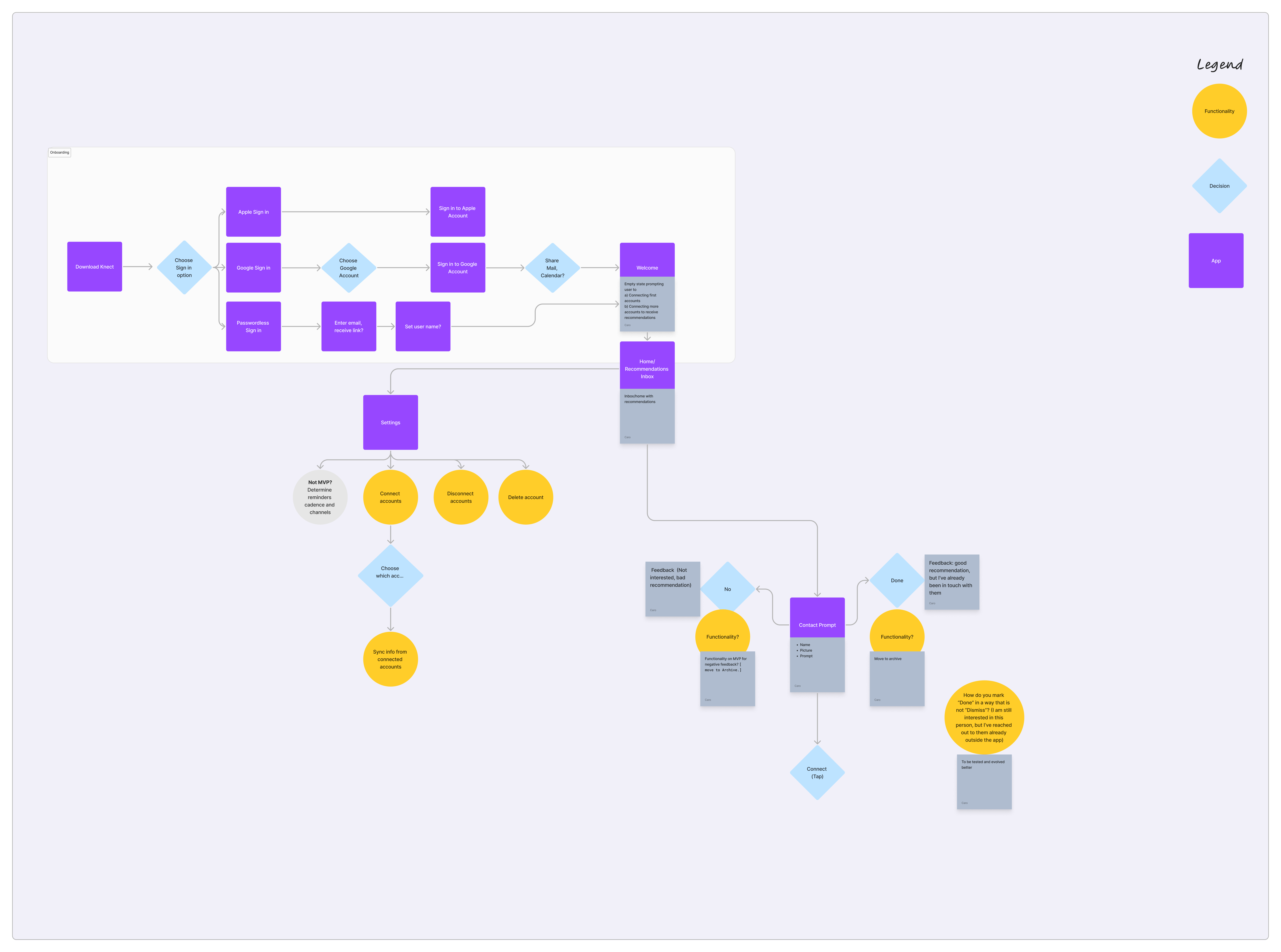A delightful way to stay connected
- Client
Knect
- Description
Validated and built a proof-of-concept mobile app using AI to tackle the challenge of maintaining social connections
How do you determine if an AI opportunity is technically feasible and worth pursuing?
Knect’s founder, Josh, was on a mission to tackle a universal challenge – staying connected.
His vision was of a tool that would passively keep an eye on people’s communications across channels, help identify their most important relationships, and support users to stay in touch with them.
Despite being a serial founder with a successful acquisition by Google, Josh came to thoughtbot’s experts to validate that this was an opportunity worth pursuing and to learn whether it was technically feasible.

Sometimes you need more than one smart person — we needed a team of the right people ready to dive in quickly. These senior engineers didn’t just tackle technical issues, they opened up a whole new way of looking at problems. It was fast, it was intense, and it totally changed the game for Knect.
Finding message-market fit through discovery sprints and rapid prototyping
We began Discovery Sprints to find the right market segment, validate the opportunity and to validate whether people would paying for a solution.
The research and discovery work included user interviews, competitor analysis, market segmentation exercises, assumptions mapping, and user testing.
We iterated on the concept through rapid prototyping, validating and evolving ideas with user feedback.
This discovery work informed the technical strategy that we were about to tackle in the next phase of the project and significantly de-risked the build for Josh and his team.
De-risking through technical feasibility spikes
Our next goal was outlining an architecture to clarify what could be built and get more specific on how difficult it would be.
In a series of technical feasibility spikes, we dove into API documentation, experimented with connectors to support access to third-party data, and built prototypes to help Josh learn quickly and de-risk his product idea.
After the Discovery phase, we continued this work by building a proof-of-concept mobile app.

Building product architecture and processing API data
This phase involved building a complex architecture in a very short amount of time.
Analyzing Knect users’ social and professional networks by tapping into various social platforms meant having lots of API requests and raw data.
Dealing with so many requests could result in very high costs, so we prioritized better process of the data by using background jobs and mapping data into a common format that was usable in our app (instead of the raw API responses).
Leveraging AI and heuristics
We developed a proof-of-concept app that connected to the user's Google and LinkedIn accounts, analyzed the data, and provided recommendations of people the user should connect with based on a predetermined set of heuristics.
We experimented with custom GPTs and writing complex heuristics in SQL to sift through data, while establishing a good base level of privacy and security, building a reliable app that could deal with so much sensitive information.
Knect founder Josh left with the confidence and tools to decide what the next steps of his venture would look like.
Coming out of it, I now have a specific understanding of what would be valued and how by specific people. Now I know I have a good sense of what to actually do.
